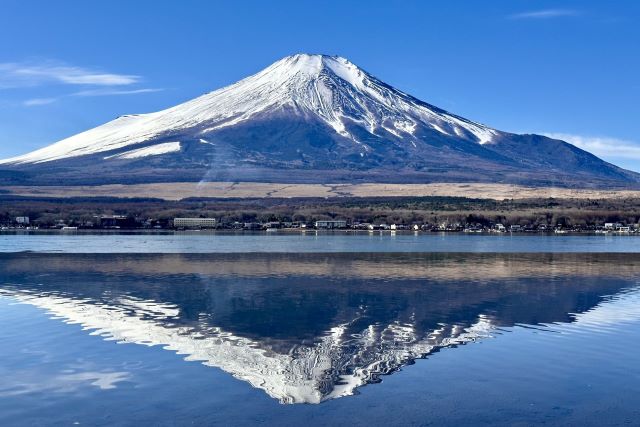Introduction to Instagram-Worthy Photos
“Fuji Five Lakes” is the collective name for the five lakes located on the northern side of Mount Fuji. These lakes are part of a UNESCO World Heritage site. The current shapes of these lakes were formed when lava flows from Mount Fuji’s eruptions divided and dammed large lakes.
Additionally, these lakes are close to the Tokyo metropolitan area and easily accessible by public transportation, making them popular tourist destinations. You can enjoy the beauty of Mount Fuji along with cherry blossoms in spring, fresh greenery in summer, colorful foliage in autumn, and snowy landscapes in winter. There are various activities available, such as fishing, water sports, trekking, and hot springs. There are also outdoor facilities like ski resorts, skating rinks, and campsites, as well as museums and art galleries, making them worth visiting year-round.
Lake Kawaguchi
At an elevation of 830 meters, Lake Kawaguchi is the lowest and has the longest shoreline (17.4 km) among the Fuji Five Lakes. The lakeside is lined with hotels, inns, and souvenir shops. You can enjoy beautiful scenery throughout the year, including cherry blossoms in spring, colorful foliage in autumn, and the inverted reflection of Mount Fuji on the lake surface. Lake sports such as fishing and boating are also popular. Previously known for ice fishing for smelt, Lake Kawaguchi has seen an increase in black bass, making sport fishing popular. The “Momiji Corridor,” a scenic spot for enjoying autumn foliage with Mount Fuji and Lake Kawaguchi in the background, is also nearby. There is paid parking close by, but free parking is available a bit further away. The area is lit up until 10 PM, but be aware of the public transportation schedule. It is recommended to dress warmly as it can get cold at night.
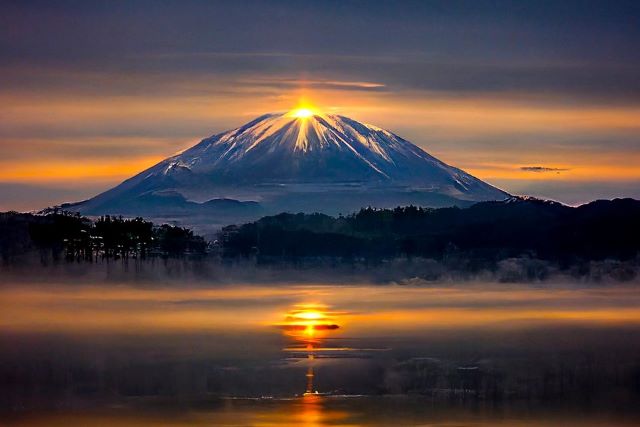
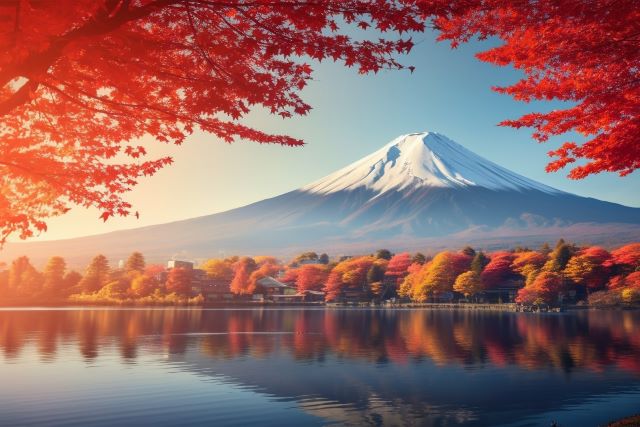
Instagram Worthiness:★★★★★
Photography Opportunity: All seasons
Location Information: ▶Map, Hours, Routes
Transportation Information: 10-minute walk from Kawaguchiko Station
Lake Motosu
Lake Motosu is the deepest and clearest among the Fuji Five Lakes. The view of Mount Fuji from this lake is the model for the design on the back of the 1000 yen bill. The inverted reflection of Mount Fuji on the lake surface is a representative scenic view of Mount Fuji.
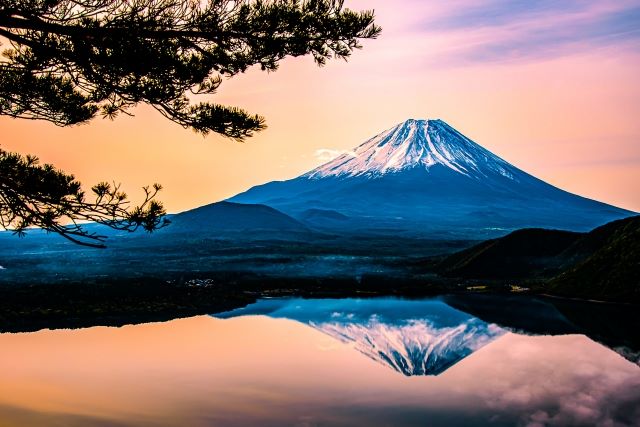
Instagram Worthiness:★★★★★
Photography Opportunity: All seasons
Location Information: ▶Map, Hours, Routes
Transportation Information: 50-minute bus ride from Kawaguchiko Station
Lake Shoji
Lake Shoji is the smallest among the Fuji Five Lakes, with an area of 0.8 square kilometers and a circumference of 4.4 kilometers. The view of Mount Fuji from this lake is called “Kobokufuji,” where the foreground’s small mountain looks like a child, and Mount Fuji appears to be holding it. This unique view makes it a popular photography spot.
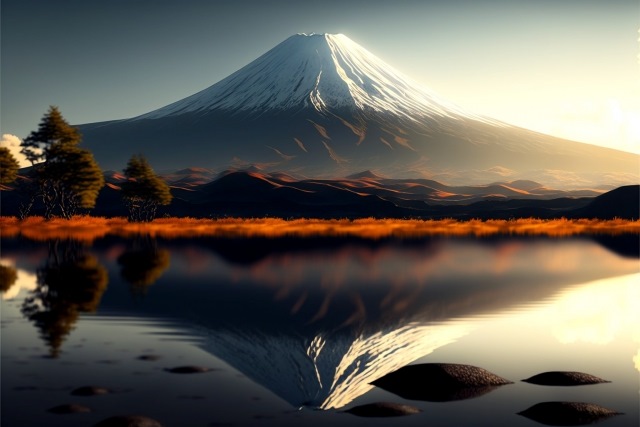
Instagram Worthiness:★★★★★
Photography Opportunity: All seasons
Location Information: ▶Map, Hours, Routes
Transportation Information: 40-minute bus ride from Kawaguchiko Station
Lake Saiko
Lake Saiko, surrounded by the Aokigahara Sea of Trees, is the second deepest of the Fuji Five Lakes. There are many lava caves around the lake, with “Bat Cave” and “Ryugu Cave” designated as natural monuments by the government. Currently, rainbow trout farming is conducted here, making fishing a popular activity. Hydroelectric power is also generated using the height difference with nearby Lake Kawaguchi.
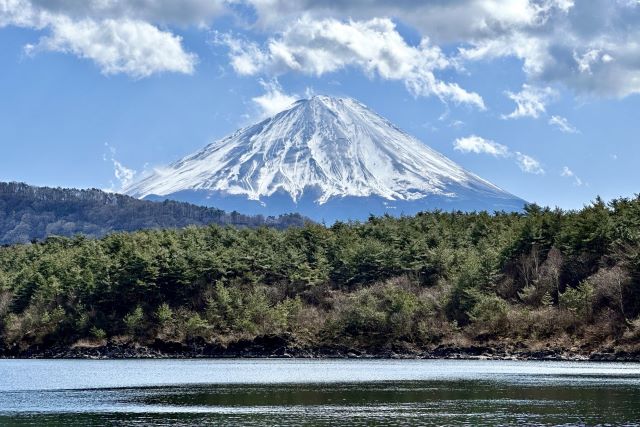
Instagram Worthiness:★★★★★
Photography Opportunity: All seasons
Location Information: ▶Map, Hours, Routes
Transportation Information: 40-minute bus ride from Kawaguchiko Station
Lake Yamanaka
Lake Yamanaka is the largest in area and closest to Mount Fuji among the Fuji Five Lakes. It is a popular summer resort due to its cool climate in summer, and you can enjoy the “Diamond Fuji” in winter. “Diamond Fuji” refers to the scene where the sun aligns with the summit of Mount Fuji, creating a diamond-like sparkle. This view is particularly beautiful at sunset and can be observed from Lake Yamanaka for about four and a half months from autumn to winter. This phenomenon occurs twice a year, in autumn and winter, and if you’re lucky, you can see a “Double Diamond,” where the Diamond Fuji is reflected in the lake.
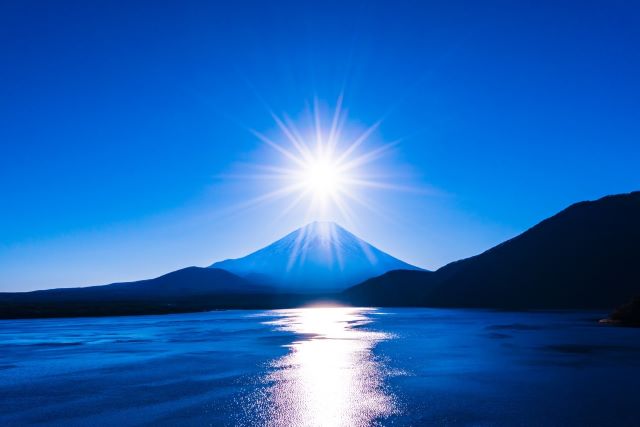
Instagram Worthiness:★★★★★
Photography Opportunity: Autumn, Winter
Location Information: ▶Map, Hours, Routes
Transportation Information: 2 hours and 10 minutes by bus from Busta Shinjuku
Oshino Hakkai
Located between Lake Kawaguchi and Lake Yamanaka, Oshino Hakkai consists of eight spring water ponds (Deguchi Pond, Okama Pond, Sokonashi Pond, Choshi Pond, Waku Pond, Nigori Pond, Kagami Pond, and Shobu Pond). These ponds are fed by the underground water from Mount Fuji and surrounding mountains, and you can experience the historical significance of these ponds as places of ancient faith and purification rituals.
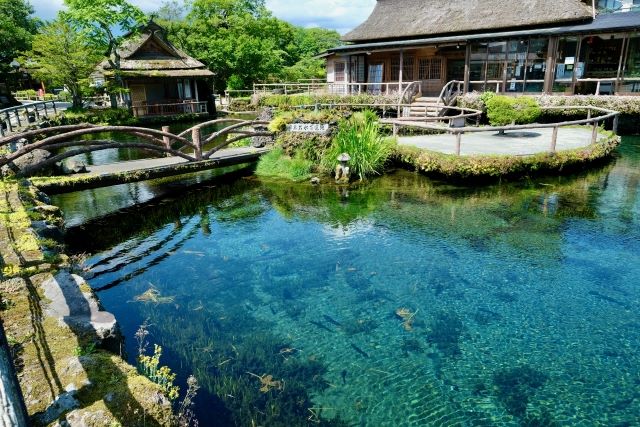
Instagram Worthiness:★★★★★
Photography Opportunity: All seasons
Location Information: ▶Map, Hours, Routes
Transportation Information: 30-minute bus ride from Kawaguchiko Station
Aokigahara Sea of Trees
At the Saiko Nature Center in Aokigahara, forest walks guided by certified guides are offered. The vast primary forest of Aokigahara, spanning about 30 square kilometers, was formed on lava from an eruption of Mount Fuji about 1,200 years ago. There are campsites and parks nearby, with walking trails that allow you to explore Aokigahara.
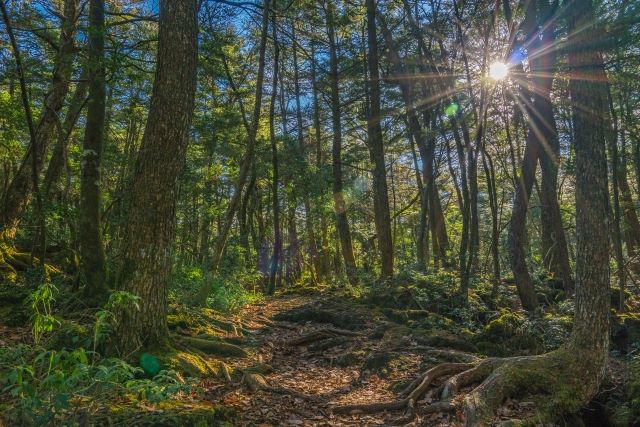
Instagram Worthiness:★★★★★
Photography Opportunity: Spring, Summer, Autumn
Location Information: ▶Map, Hours, Routes
Transportation Information: 35-minute bus ride from Kawaguchiko Station
Cherry Blossoms, Five-Story Pagoda, and Mount Fuji
Arakurayama Sengen Park, famous for photos of cherry blossoms and Mount Fuji, has gained popularity among foreign tourists due to a blog by a Thai person. The park is known as a beautiful hanami (flower viewing) spot where you can enjoy the cherry blossoms, Mount Fuji, and a five-story pagoda simultaneously. Access is a 7-minute walk from Shimoyoshida Station on the Fujikyu Line.
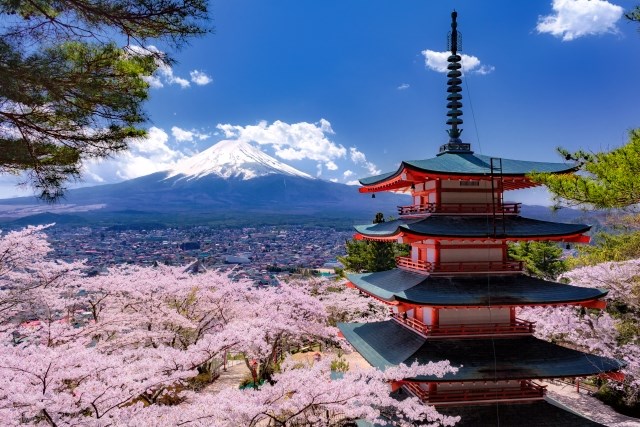
Instagram Worthiness:★★★★★
Photography Opportunity: Spring
Location Information: ▶Map, Hours, Routes
Transportation Information: 7-minute walk from Shimoyoshida Station
